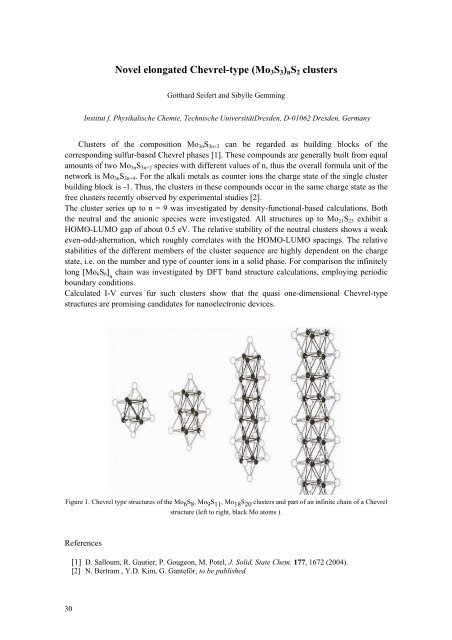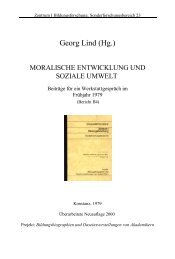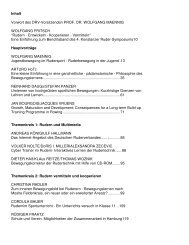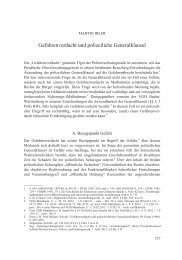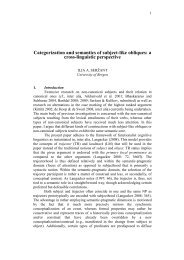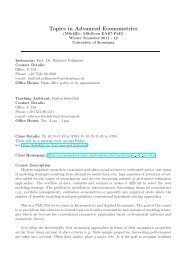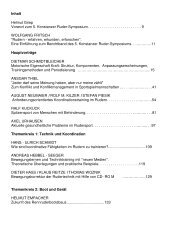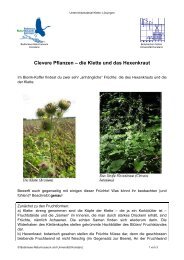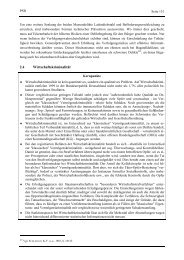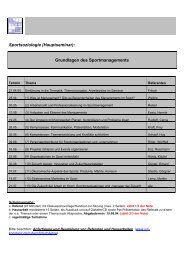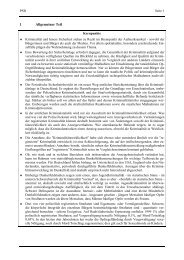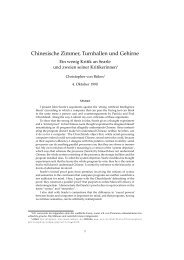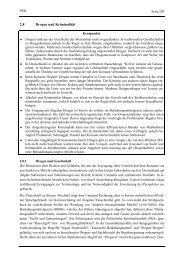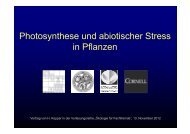Book of Abstracts Book of Abstracts - Universität Konstanz
Book of Abstracts Book of Abstracts - Universität Konstanz
Book of Abstracts Book of Abstracts - Universität Konstanz
Create successful ePaper yourself
Turn your PDF publications into a flip-book with our unique Google optimized e-Paper software.
30<br />
Novel elongated Chevrel-type (Mo3S3)nS2 clusters<br />
Gotthard Seifert and Sibylle Gemming<br />
Institut f. Physikalische Chemie, Technische <strong>Universität</strong>Dresden, D-01062 Dresden, Germany<br />
Clusters <strong>of</strong> the composition Mo3nS3n+2 can be regarded as building blocks <strong>of</strong> the<br />
corresponding sulfur-based Chevrel phases [1]. These compounds are generally built from equal<br />
amounts <strong>of</strong> two Mo3nS3n+2 species with different values <strong>of</strong> n, thus the overall formula unit <strong>of</strong> the<br />
network is Mo3nS3n+4. For the alkali metals as counter ions the charge state <strong>of</strong> the single cluster<br />
building block is -1. Thus, the clusters in these compounds occur in the same charge state as the<br />
free clusters recently observed by experimental studies [2].<br />
The cluster series up to n = 9 was investigated by density-functional-based calculations. Both<br />
the neutral and the anionic species were investigated. All structures up to Mo21S23 exhibit a<br />
HOMO-LUMO gap <strong>of</strong> about 0.5 eV. The relative stability <strong>of</strong> the neutral clusters shows a weak<br />
even-odd-alternation, which roughly correlates with the HOMO-LUMO spacings. The relative<br />
stabilities <strong>of</strong> the different members <strong>of</strong> the cluster sequence are highly dependent on the charge<br />
state, i.e. on the number and type <strong>of</strong> counter ions in a solid phase. For comparison the infinitely<br />
long [Mo6S6] n chain was investigated by DFT band structure calculations, employing periodic<br />
boundary conditions.<br />
Calculated I-V curves fur such clusters show that the quasi one-dimensional Chevrel-type<br />
structures are promising candidates for nanoelectronic devices.<br />
Figure 1. Chevrel type structures <strong>of</strong> the Mo6S8 , Mo9S11 , Mo18S20 clusters and part <strong>of</strong> an infinite chain <strong>of</strong> a Chevrel<br />
structure (left to right, black Mo atoms ).<br />
References<br />
[1] D. Salloum, R. Gautier, P. Gougeon, M. Potel, J. Solid. State Chem. 177, 1672 (2004).<br />
[2] N. Bertram , Y.D. Kim, G. Ganteför, to be published


